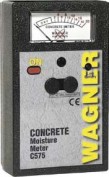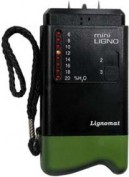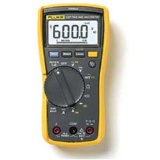Search This Site
Search With Google
By knowing the maximum level of water that can be held we can know the level of saturation in the air. The proportion is known as relative humidity and always expressed as a percentage.
Basically relative humidity is the amount of water vapour in the air at a specific temperature and is expressed as a percentage.
Dew point and condensation
Cold air cannot hold as much water vapour as warm air. So if temperature drops then relative humidity increases. As air cools its abilty to hold moisture as vapour decreases. So liquid will drop from the air and this is what and where condensation comes from. Condensation begins to form at dew point.
Condensation on surfaces
Condensation on surfaces is caused when moisture laden air comes in to contact with a cold surface. The surfaces can be walls, floors and roof spaces to list a couple.
What happens is as the air gets near to a cold surface it will begin to get cooled and the relative humidity increases.
The more the air is cooled the higher the relative humidity will be. When the air hits a cold surface the temperature of the air will drop below dew point and liquid water drops out as condensation.
In a home the water in the air comes from everyday living and surprisingly there is a considerable amount of water produced. Activities such as cooking, drying clothes and taking a bath can be responsible for releasing alot of water vapour in to the air.
Just breathing produces a large amount of water vapour, and a pet dog can actually give out more water vapour than a fully grown adult.
Condensation
On This Site




The most common form of moisture dampness in the home is that of condensation. Because of the introduction of double glazing and draught exclusion products, which all contribute to cutting down the natural ventillation of a building, condensation tends to be more of a problem in newer properties than older properties.
Older properties with their open fire places, sash windows and original doors are unlikely to be affected by surface condensation, like a newer property will be.
It is water in the air which causes any surface condensation. In modern day living we have cooking, bathing and general activities which all place moisture in the air. And with an inferior ventillation situation, condensation is rapidly formed.
The basis to condensation is moisture and relative humidity. And to understand condensation better, one must familiarize themselves fully about water vapour in the air.
At any temperature air can hold a given amount of water in the form of vapour. The warmer the air is, the more water vapour can be held.


The complete moisture meter website
Moisture Meter Guide
To Care Is To Share
Moisture Meter Guide 2010 Contact details:garnett65@hotmail.com
You cannot be faulted for believing that damp walls in the home, or damp floors, will add significant water vapour to the air. But that is not the case. Damp walls and floors add only a small amount of vapour when you compare against water vapour levels from just normal living.
When you investigate how a wall dries out it becomes obvious that the drying rate is very slow and that most of the water passes outside the building.
The conclusion is that it is lifestyle and lack of ventillation which is responsible for most condensation issues.
Condensation and mould growth
Vapour vapour in the air does not cause any problems to a building or yourself. But condensation and high humidities do cause mold growth. This can be detected by the musty smell associated with damp. Mold spores can be a serious health hazard.
Black spot mold is the worst mold to have, but other forms of mold can form. Molds tend to colonise at relative humidities of around 76 % in the home. On bricks and mortar a relative humidity of 88 % will attract mold growth.
Green and yellow molds can form and certain white molds as well, which are often mistaken for salts. Mould growth can be unpleasant smelling and also cause unsightly effects on your interior decoration.
So keeping condensation in check will reduce any risk of mold growth.
Tips
Do not rely solely upon relative humidity figures on their own as this can lead to a misdiagnosis. You also need to know the air temperature.
When testing a wall for moisture content and as a possible measurement of dampness, do not just stick a humidity probe in to the wall. The wall will be colder than the inside air and you will receive a higher relative humidity reading that exists in the room.
If you use a hygrometer, you need the hygrometer to reach equilibrium with the existing environment before testing. So allow the hygrometer to acclimatise before use.
| Tramex Moisture Encounter Plus |
| Tramex Compact Wood Moisture Meter |
| Tramex Concrete Encounter Moisture Meter |
| Tramex Skipper Plus Moisture Meter |
| Tramex Roof And Wall Moisture Scanner |
| Sonin Digital Moisture Meter model 50218 |
| Sonin Digital Moisture Meter 270 model 50270 |
| Sonin Moisture Test Tool model 50210 |
| Sonin Moisture Test Meter Model 50211 |
| Oak |
| Douglas Fir |
| Beech Tree |
| Elm Tree |
| Hickory Tree |
| Maple Tree |
| Pine Tree |
| Prevent And Repair Gaps In Wooden Floorboards |
| How To Fix A Squeaky Hardwood Floor |
| How To Repair A Hardwood Floor That Has Buckled |
| Which Is The Best Firewood? |
| Concrete |
| Concrete Moisture |
| Screed Moisture Meter |
| SDS Drill |
| Belle Cement Mixer |
| SDS Drill Advice |
| Which SDS Drill |
| SDS Drill Accessories |
| Drilling Into Concrete |
| Kennedy Tool Box |
| Moisture - Basic Facts |
| Types Of Damp |
| Wet Rot |
| Dry Rot |
| Mold |
| Water Leak Detection |
| Stucco Moisture |
| Water Damage |
| Moisture And Rust |
| Moisture Damage To A Chimney |
| Wallpaper Stripper |
| Plaster Mixer |
| Why Worry About Moisture Problems |
| Does Your Home Have A Moisture Problem? |
| How To Solve Moisture Problems |
| How To Use Anti Mold Paint |
| Rising Damp |
| Condensation |
| Salt Damp |
| How To Avoid Bathroom Condensation |
| How To Remove Black Mold |
| How To Prevent Bathroom Mold |
| Soldering Kit |
| Soldering Kit Contents |
| Soldering Kit Advice |
| Bonsai Tree Classification |
| Growing Bonsai From Seed |
| Bonsai Tree Care |
| Bonsai Tree Training |
| Bonsai Tools |
| Displaying Bonsai |
| Bonsai Calendar |
| Bonsai Plants |
| The Thirsty Light Curve Moisture Meter |
| The Thirsty Light Ladybird Moisture Meter |
| The Thirsty Light Bumble Bee Moisture Meter |
| The Thirsty Light Butterfly Moisture Meter |
| Hanna Instruments |
| Agratronix Portable Coffee Moisture Tester |
| Lawn Aerator |
| Lawn Roller |
| Lawn Rake |
| Lawn Sand |
| Chainshot |
| Chainsaw Gloves |
| Chainsaw Trousers |
| Chainsaw Boots |
| Mac 4 - 20 XT Chainsaw |
| Mac 738 Chainsaw |
| Mac 842 Chainsaw |
| Mac 20X Power Chainsaw |
| Einhell BG-PC 3735 Chainsaw |
| Einhell BG-PC 4040 Chainsaw |
| Einhell BG-PC 5045 Chainsaw |
| Poulan P3314 Chainsaw |
| Poulan P4018 Chainsaw |
| Poulan Pro PP3816AV Chainsaw |
| Poulan Pro PP4218AVX Chainsaw |
| Poulan Pro PP4620AVX Chainsaw |
| Efco MT 4100 SP Chainsaw |
| Efco MT 3500 Chainsaw |
| Efco 132 S Chainsaw |
| Efco 147 Chainsaw |
| Efco 152 Chainsaw |
| Efco MT 7200 Chainsaw |
| Efco MT 8200 Chainsaw |
| Efco MT 3750 Chainsaw |
| Methods Of Obtaining Soil Moisture Levels |
| Hygrometer |
| Psychrometer |
| Rain Gauge |
| Wave Ventilation System |
| Humidity |
| Hygrometer For Keeping Reptiles |
| Humidor |
| Weather Stations |
| Musical Instrument Storage |